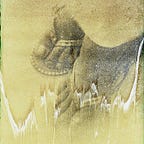A Visual Appreciation of ‘Carol’
Seeing the Great American Photographers in Todd Hayne’s Latest Movie
In a year of many memorable movies, Todd Haynes’ Carol stands out. The story is universal, one of awakening love and self-discovery. The story behind the story is fascinating in its own right, but knowing that history isn’t necessary to appreciate what you see. The performances of Cate Blanchett and Rooney Mara have extraordinary depth, particularly when presenting their characters’ thin translucent facades of understated propriety. The movie conveys a sense of it all by enveloping you in its world’s warm but halting embrace.
How the movie accomplishes this is primarily through its look. If you can ignore the obligatory praiseful blurbs from critics in the movie’s wonderful wordless trailer, you’ll get an idea of how much of the movie’s power rests on imagery.
All period movies present for its audience a particular era. But this movie immerses its audience in its time. Ed Lachman, the Director of Photography for the film, discusses what he and Todd Haynes were aiming for:
This was the end of the war, an uncertain time. Our period was quite austere compared with the materialistic, busy environment of the later ’50s. It mirrored their emotional feelings by creating this kind of muted austere world visually.
I’m a photographer who finds much inspiration from movies. For this movie, Lachman found inspiration from photographers of the period.
Here we’re representing and looking at the cultural and visual signifiers of the time. So, yes, we actually looked at mid-century photographers who were photojournalists. A large part of them happened to be women, people like Ruth Orkin, Esther Bubley, Helen Levitt and then later Vivian Maier.
Lachman continues:
These were photographers who were starting to experiment in color. So that gave me the idea of trying to reference a visualization of, let’s say, early Ektachrome, rather than Kodachrome, rather than color negative. And that’s why the colors have this kind of coolness/warm mixture. I play with magentas and greens. The color didn’t have a full spectrum the way color is seen today. And then later a photographer that was a street photographer and became a fashion photographer for a time, but was more an art photographer, was Saul Leiter.
To get the look he was after, Lachman chose to shoot film rather than digital. The grain of the 16mm stock Lachman used isn’t visible in every scene, but it’s always present.
We opted to shoot in 16mm. We wanted to reference the photographic representation of a different era. They can recreate grain digitally now, but it’s pixel-fixated. It doesn’t have this anthropomorphic quality in which the grain structure in each frame is changing. The actual physical grain of film adds another expressive layer that is impacting the surface of the characters’ emotional being. It has to do with how film captures movement and exposure in the frame — finer grain for highlights and larger grain for lower light areas — that gives a certain emotionality to the image that feels more human. I really believe with ‘Carol’ that people would feel something different if I had shot it digitally.
Advocacy of film based on such qualities is often derided by photographers and filmmakers who think digital is universally superior, all the while they search for filters and plug-ins to emulate the various looks of film. I think part of what’s behind it is a belief in the unbridled progressive advance of technology. Yet, it’s not as if Lachman and Haynes shot Carol on 1950s film stock. Technological advances in film have been astounding in recent years.
The other important thing for me with film over digital is the way color is portrayed. For example, if I have a cool window and warmer lights inside, in the digital world they don’t mix the way they do in film. With film grain, there’s a crossover and contamination between warm and cool colors that I don’t find digitally. Digital lacks a sense of depth in color separation the way it does in film. In film, there’s these three layers, R,G,B. For me, it’s almost like an etching where the light is eating into the negative when it’s developed, and even though it is microscopic, it gives a depth to the image that I always feel is lacking digitally.
These are interesting observations — how digital operates around fixed points (pixels) in a single plane while film operates around grains that change size and shape frame to frame, carrying colors that reside on different planes in the film’s emulsion.
The aesthetic of film, derived from the technology of film, has influenced what we expect depicted worlds to look like, and what we find visually pleasing. Maybe in later generations, these visual references and training of our eyes and brain will be fully supplanted by digital image-making. Some may argue it’s already happened. But I think those people forget or are unaware that the digital tools they use are rooted in a film aesthetic that has become the standard.
Certainly, the film aesthetic is no longer the only standard. The digital visual standard of surveillance cameras and Google street view have emerged to take their place in the world. The flat smooth video of local television news is another. But when we seek emotional engagement, we look toward film and its faithful digital emulations. I think that debate, mistakenly framed as a technological battle between film and digital, has already been settled and won. Movies like Carol remind us of that fact.
